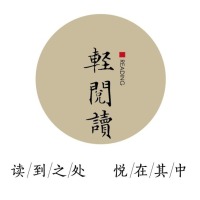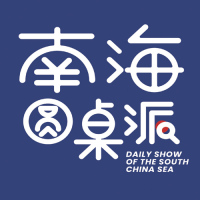Beyond“Innocent Passage”: The Gambit Behind Australia's Xisha Incursion
On October 19, 2025, a Royal Australian Air Force (RAAF) P-8A Poseidon maritime patrol aircraft blatantly intruded China's territorial airspace over Xisha, a flagrant provocation against China’s sovereignty. The Air Force of the Chinese People’s Liberation Army Southern Theater Command took prompt and decisive countermeasures, organizing elite air and naval forces to conduct full-process tracking and surveillance, and resolutely drove the aircraft away in accordance with laws and regulations.
After the incident, the Australian side distorted the facts, while Western media quickly echoed its narrative, exaggerating that China’s fighter jets had conducted an “unsafe and unprofessional” close intercept of the P-8A and released flares nearby, allegedly endangering the Australian aircraft.
In essence, this incident was a deliberate provocation, an infringement on another nation’s airspace sovereignty and a malicious distortion of international law principles. Behind it lies blatant diplomatic coercion and media manipulation.

Royal Australian Air Force P-8A Poseidon (file)
I. What Exactly Is This So-Called “Freedom of Navigation in International Airspace”?
Australia and its Western allies habitually use the pretext of “freedom of navigation,” claiming that their military aircraft are flying in so-called “international airspace.” This is a deliberate distortion of international law. In this incident, the Australian side rushed to justify its provocation by asserting that its aircraft was exercising “freedom of navigation in international airspace,” an attempt to mislead public opinion.
Anyone with a basic understanding of international law knows that the Australian aircraft had already gone far beyond the bounds of airspace over the high seas and entered another country’s sovereign airspace. In such a case, there is no “freedom of navigation” to speak of. The airspace over a territorial sea and the airspace over the high seas are fundamentally different in legal status. The notion of “freedom of navigation in international airspace” has no basis in international law; it is not only legally untenable but also a deliberate misinterpretation and abuse of international legal principles.
According to universally recognized principles of international law, a country enjoys full and exclusive sovereignty over the airspace above its land territory and territorial waters. China has indisputable sovereignty over the Xisha Qundao and the adjacent waters, a position supported by ample historical and legal evidences. Therefore, no foreign aircraft has the right to enter China’s territorial airspace without authorization; doing so constitutes a blatant violation of China’s sovereignty. This principle is clearly stated in several international legal instruments, including the Charter of the United Nations and the Convention on International Civil Aviation. Article 3 of the latter explicitly stipulates that no foreign state aircraft, including military aircraft, may enter the airspace of another country without special agreement or permission.
Australia’s unauthorized intrusion of its military aircraft into China’s airspace over the Xisha Qundao was a serious breach of these principles and an outright act of infringement. As a sovereign nation, China has every right to take all necessary measures, including expulsion, in response. Such actions are a legitimate exercise of national sovereignty and are entirely beyond reproach.
II. Why Does This All Feel So Familiar?
This is far from an isolated incident; it is a continuation of Australia’s deliberate provocations in recent years. In fact, such aerial confrontations have occurred multiple times in the past few years. As early as May 2022 and again in February 2025, Australian military aircraft illegally entered China’s airspace and were warned off by Chinese J-16 fighter jets. At that time, the Chinese jets released chaff and flares to signal deterrence.
However, rather than learning from these incidents and exercising restraint, the Australian side has only intensified its actions, with the frequency of incursions and provocations clearly on the rise. This marks the second serious violation of China’s Xisha airspace by Australian military aircraft this year, revealing their growing audacity. In the face of Australia’s escalating military adventurism, China has been left with no choice but to take stronger and more decisive countermeasures to safeguard national sovereignty and security.

Australian Defense Minister Richard Marles deliberately "publicly disclosed" on October 20th, accusing Chinese military aircraft of "unprofessional" operation.
In the aftermath of the incident, Australia’s response has been nothing short of theatrical and hypocritical. On one hand, the Australian side lodged so-called “concerns” with China through diplomatic channels; on the other, it rushed to make the details public in an attempt to win sympathy and support from the international community. Australian officials and media outlets have been incessantly portraying China’s interception as “unsafe,” deliberately crafting a negative image of China as “aggressive.”
Several Western countries, without fully understanding the facts, hastily chose to side with Australia and unjustly accused China. Overall, Western discourse has followed a familiar pattern: exaggerating the so-called “provocative” nature of China’s actions while downplaying or even ignoring the core truth that the Australian aircraft violated China’s sovereign airspace in the first place.
This blind favoritism toward allies and blatant double standards once again expose the West’s hypocrisy on China-related issues. When Western military aircraft travel thousands of miles to conduct reconnaissance and provocations near another country’s airspace, they glorify it as exercising “legitimate rights.” Yet when the country being intruded upon takes lawful defensive measures, they turn around and accuse it of “dangerous provocation.”
There is no doubt that this seamless coordination between front-line military actions and media manipulation, coupled with biased and misleading narratives, clearly reveals that Australia’s move was by no means an accidental error. Rather, it was a deliberate and carefully orchestrated act of provocation, backed by insidious attempts to wage an information and cognitive warfare campaign against China.
III. Is Australia Really Here for “South China Sea security”?
The P-8A Poseidon involved in this incursion is an advanced maritime patrol and reconnaissance aircraft operated by the Royal Australian Air Force, capable of long-range surveillance, anti-submarine, and anti-surface warfare. Since 2016, Australia has introduced the P-8A to gradually replace its aging AP-3C Orion fleet, carrying out extensive maritime intelligence, surveillance, and reconnaissance (ISR) missions. These aircraft are typically used by the Australian Air Force to patrol surrounding waters, track naval movements, and collect electronic intelligence.

On April 7, 2024, Australia, the United States, Japan, and the Philippines held a joint exercise in the South China Sea.
It is worth noting that the South China Sea lies far from Australian territory. If a P-8A were to fly directly from Australia to conduct close-in reconnaissance missions there, both its range and endurance would be severely constrained. In recent years, however, Australia has deepened its defense cooperation with countries such as Japan and the Philippines, creating conditions for forward deployment in the Asia–Pacific. Australian P-8As have been repeatedly stationed at Kadena Air Base in Okinawa, Japan, to participate in Operation Argos, a joint patrol mission monitoring North Korean maritime activities. In addition, the Australian military has frequently used U.S. bases in Guam and the Philippines for transit and refueling, thereby extending its reconnaissance reach into the South China Sea region.
The P-8A that violated China’s airspace over Xisha Qundao most likely took off from or transited through a base in Southeast or East Asia. It followed an international air route over the South China Sea but abruptly deviated near a waypoint close to Xisha Qundao, taking a shortcut to approach Chinese airspace for reconnaissance and provocation. Such a deliberate, coordinated provocation, especially involving countries far from the South China Sea, was then hypocritically justified by Australia as being “for regional security.”
This kind of bloc-building and military posturing is nothing more than a revival of Cold War mentality in the 21st century, running counter to the prevailing trend of peace and development and detrimental to regional stability. The South China Sea region already has mechanisms such as the Declaration on the Conduct of Parties in the South China Sea (DOC) to manage differences and promote mutual trust. Yet the repeated interference of extra-regional powers has only made the situation increasingly volatile. Australia is not a littoral state of the South China Sea, yet it has sent military aircraft thousands of kilometers to provoke trouble. Such actions undermine the joint efforts of China and ASEAN countries to maintain stability and will inevitably prompt regional states to ramp up their military capabilities, trapping the region in a dangerous cycle of insecurity. It is therefore clear that Australia’s reckless provocation has added new risks and uncertainties to regional security.
IV. Is Showing Off Military Strength Really Beneficial for Australia?
From a strategic perspective, Australia has in recent years increasingly followed the United States’ lead in security policy, actively engaging in military competition across the Indo-Pacific. Canberra often claims that its patrol flights over the South China Sea are intended to “uphold the rules-based international order” and exercise the right to freedom of navigation and overflight under international law. Yet it is clear to all that these lofty justifications are merely a smokescreen. The real objective is to coordinate with Washington’s so-called “Freedom of Navigation Operations” (FONOPs) and conduct close-in reconnaissance and military pressure against China.

On October 20th, US President Trump met with Australian Prime Minister Albanese at the White House to jointly sign an agreement involving rare earth and key mineral mining exports.
By flaunting its military presence in the South China Sea, Australia seeks both to demonstrate loyalty to its U.S. ally and to project an image of “safeguarding regional security” to its domestic hardliners, catering to an increasingly hawkish anti-China sentiment at home. The “coincidental” intrusion of an Australian military aircraft into Xisha Qundao during the Australian Prime Minister’s visit to Washington to discuss rare earth supply was hardly accidental; it reflected not only Washington’s strategic influence but also Canberra’s political calculations. However, by willingly playing the role of a pawn in the U.S. Indo-Pacific strategy and repeatedly provoking incidents far from its own shores, Australia’s actions are anything but wise.
Excessive provocation, in turn, inevitably harms Australia itself. In recent years, Canberra has pushed to turn its Indian Ocean territory, the Cocos (Keeling) Islands, into a regional military hub, massively expanding the island’s airfield in open violation of its earlier commitment to the United Nations not to use the islands for strategic military purposes. This move has triggered strong local opposition and deep international concern. Given such “excessive maritime and territorial claims,” should other countries, including China, also exercise their “internationally lawful rights” to conduct “safe and professional military operations” in what Australia calls its international waters and airspace? And when that happens, will Canberra still cheer for others’ “freedom of navigation in international airspace”?
The recent incursion of the Australian military aircraft into the Xisha Qundao has undoubtedly added fuel to the already tense China-Australia relationship. In recent years, political and economic disputes between the two countries have been persistent, and this direct military confrontation in the security domain casts a new shadow over bilateral ties. Following the incident, some hardline forces in Australia have seized the opportunity to hype up the so-called “China threat,” inflating tensions and further poisoning the public discourse surrounding China-Australia relations. It is foreseeable that, in the near future, the already fragile mutual trust between China and Australia will be further weakened, making dialogue and cooperation in defense and security increasingly difficult. Australia’s actions have not enhanced its own security; on the contrary, they have undermined the overall bilateral relationship, proving to be counterproductive.
Looking ahead, as long as countries such as the United States and Australia continue high-intensity close-in reconnaissance and military exercises in China’s surrounding air and sea spaces, China will continue to take firm and resolute measures to safeguard its sovereignty and security. At present, China and ASEAN countries are intensifying consultations on a “Code of Conduct in the South China Sea,” aiming to establish clearer rules for activities in the region and jointly maintain peace and stability. As a responsible major power, China will continue to firmly defend its sovereign and security interests while adhering to dialogue and negotiation as the primary approach to resolving disputes, promoting the establishment of a new type of regional security partnership.
(Author: Yang Xiao, Researcher at the China Institute of Contemporary International Relations and Special Invited Researcher at the CMG Expert Committee on South China Sea Studies)














